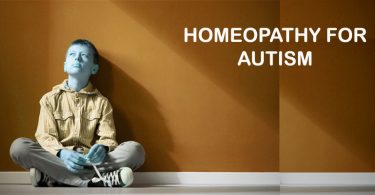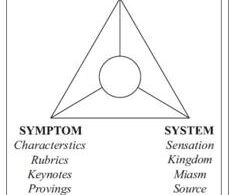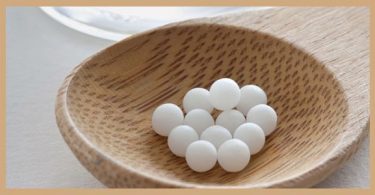While natural philosophy and science in England and Germany had set the stage for the consideration of the ‘question of life’ in a fruitful manner that went beyond the pitfalls and one-sidedness, as well as the false duality, of reductionism vs vitalism, it was in medicine that the problem came to a head and in medicine that a solution was developed for the proper method of studying organic or vital nature, a method that was grounded in natural science, but a natural science that encompassed the vital (living functional) dimension. Here we find where Theoria becomes Praxis – in the practical and effective application of the insights of dynamic physiology, (true) Baconian abductive method, and Goethean morphological method (two poles of dynamism) – Romantic ‘medicine’ (healthcare, covering both regimen and medicine proper). Romantic philosophy had furnished the theoretical foundation, but it was a profound crisis in Western medicine that provided the motive and opportunity for a group of reformers to more fully develop, practice and disseminate a new approach to the age-old challenge of sickness and death.
As the old noetic (participative) capacity of the Greeks declined and eventually faded in the light of the emerging mentative (separative) capacity of Western cognition, the Hippocratic tradition, which rested on an etheric understanding of etheric functions (the four ethers and their temperaments), became only a hollow form, replaced in content by either blind adherence to a vastly modified tradition or at best an eclectic empiricism that resisted the application of natural science to medicine and posited a hypothetical vital force to resist the claims of physics and chemistry – the Old School.
At the same time, the efforts of material natural science to provide a proper scientific basis for medicine had failed, though it continued on in its appointed field, surgery, and blossomed into Western emergency ‘medicine’ (Dr. Kildare, House, St. Elsewhere, Grey’s Anatomy, etc.) – Hamlet without the Prince, or medicine without any real internal system of treatment for chronic disorders and diseases, but only a poisonous chemistry for the suppression of symptoms. Neither ‘medicine as (subjective) art’ nor ‘medicine as (material) science’ could provide the solution to life and health. By the end of the 1700’s, therapeutic intervention, not only in Germany, but throughout Europe, was in a deep crisis. This crisis has its roots in the birth of medical intervention as a science (method) in Ancient Greece.
Prior to medicine, man acted instinctively according to an ancient wisdom, animal-like, when sick, which seldom occurred in a state of nature, relying on the inherent natural healing power (the physis or vis medicatrix naturae). However, with the increasing separation from nature and wisdom (sophia), the issue of a more conscious intervention along with its epistemological, that is, rationally justified, basis arose. The emerging science of intervention in disturbances of health (‘medicine’) had to justify that its acts were or at least could be causally related to any positive outcome, that is, based on law (predictability), and not due simply to ‘chance’, that is, factors unrelated to a given therapeutic action or agent (‘take the medicine and feel better in a week, or wait and feel better in seven days’). And the claim to be acting in accordance with natural law required also a rational knowledge of therapeutic agents, and finally, which agents to apply in which situations. However, this new science or ‘Remedial Arte’, with its methodology, has always been challenged by the general failure to be consistently and broadly effective in application (hence the old joke that this is called ‘practice’). As one historian concluded:
All further medical research since ancient times stands in the penumbra of this struggle for certainty. All the trials and failures striving towards this goal would call for a history of medicine bathed in an all-encompassing light. This history of the ‘trials and failures’ of Western healthcare finally led, under the impulsion of the Enlightenment and the struggle concerning the proper methodology to approach vital nature (natura naturans) and the question of life, to a crisis. There were many competing approaches, based first on the leading clinicians of the time – Boerhave, Hoffman, Stahl, and later on a unifying principle, such as that of Haller (‘irritability’) or Brown (‘excitability’), or Hahnemann (principled application of the natural law of opposites and of similars).
The uncertainty of scientific and practical medicine on the threshold of the 1800’s, as Diepgen characterized the situation, confounded the best heads in the field. What was to be deemed abiding and steadfast amidst the ceaseless welter of systems, schools and theorems that could warrant practical application? Where was certainty to be found for Heilkunde? Was there such a thing, and in what form? This crisis led to the construction of fanciful systems or to a blind empiricism, “a dogmatic medicine with its supposed etiologies and its hastily constructed ‘systems’ and turning to the confines of a sober, factual research that contents itself with observation of the appearances and whatever rules can be derived therefrom.”
Western medicine then (as now) suffered from two fundamental flaws: one, that it had no knowledge of living functions of the organism (true physiology), and two, that the cause(s) of most disease conditions were (and remain) unknown (idiopathic). The result was an emphasis on the indications (semiotics), disease being named according to certain visible or stark signs (e.g, pneumonia = inflammation of the lungs) with their removal (palliation or suppression or symptomological treatment). Where there were no clear or dramatic signs, confusion reigned in any attempt at diagnosis. Due to the numerous factors affecting diseases such as age, temperament, and lifestyle of the patient, along with time of year, climate and epidemic constitution, it would be impossible to distinguish and assign the single disease indications to the pertinent disease form. One would be constantly forced to make exceptions to the rules so that finally bedside practice would be reduced to the utilization of instinct.
And the ignorance and confusion concerning the origin and nature of divergences from health was matched by that concerning the medicines used, often poisons and caustic agents, resulting in wise-spread iatrogenesis. As one historian concluded, “the turn of the century was a crisis point for therapeutics” based on “this pile of fallacies” and an unprecdented “crop of suggestions pertaining to medical laws, administration and constitution.” This widely acknowledged crisis was brought into stark relief in 1795 in a famous essay by a German physician, Johann Erhard, in the ‘shot’ that was heard around the medical world. This criticism was devastating not only for its criticism of the actual state of confusion and lack of science in healthcare, but also because it brought the influential Kantian skepticism regarding the possibility of a science for healthcare to bear on the situation.
There were two main streams in response to the ‘crisis of medicine’: one, an empirical one, involving a return to clinical experience, but borrowing from the best of contemporary clinical practice – an eclectic approach, led by a leading figure, Hufeland; and, two, an attempt by the more academic doctors to provide a more rational, scientific basis in physiology and natural science, largely influenced by the Naturphilosophen, such as Schelling. Both groups had no clear foundation for linking and integrating rational explanation with clinical application, and “both implicitly accepted a degree of separation between theory and practice.”
It also came from a new impulse, one that emerged at this time and made it possible for the gathering storm of doubt and criticism within medicine both to be activated as a broader cultural debate by the lightning bolt of Erhard’s 1795 essay, and for it to lead to a radically new approach to healthcare.
The critique that medicine could not be considered a true science (based on Kantian philosophy) in the sense of directive laws and principles, did however lead to an effort to find regulative or supervisory maxims that could allow medicine to be accorded a certain scientific character. This effort suddenly brought into prominence and lively debate a work by an obscure Scottish physician that had been written (in Latin and English) two decades earlier and been circulating in Germany (in various translations as well) to little effect, the Elements of Medicine or Elementa Medicinae of Dr. John Brown, which work provided a unified approach founded upon an over-arching theory (‘excitation’).
The crisis manifested mainly in the following questions:
- a) Theoretical & conceptual formation
- b) Dependability and knowledge
- c) The connection between laws and facts
- d) The relation of theory to practice
- e) The relation of organism and environment
Medicine had to master these epistemological problems in order to put itself in a position to shatter the old school and to pave the way for medical evolution in terms of experimental and practical science. Our study has further shown that the problems were in fact the very ones which inertial science had to master while emerging in the 1600’s. However, medicine couldn’t simply copy its way but needed to blaze its own trail. This led to a call for reform of the traditional practice of medicine, aligned with and guided by a true science of nature, which is grounded in vital nature (natura naturans) and based on a true physiology of living, vital functions (vitality).
The two main streams in therapeutics were the traditionalists or eclectics (Hufeland) and the radicals, led by a new physician who took up the Brunonian system, Andreas Röschlaub. The traditionalist approach was to champion going “back to the principles of the Hippocratic clinic which is the one sane foundation and guarantee underlying practice.” This involves, as noted earlier, a “strong emphasis on the ‘semiotics’ of the time, the promulgation of casuistry as the main method of practice, the energetic defense of symptomology and the rejection of all notions not derived from the sick bed but from the lucubrations of speculators such as chemists.”
Against this ‘looking back’, Röschlaub and his supporters “proposed a reformation that involved a complete overhaul of old school practices,” not only for its lack of science, but also because it, like medieval scholastic philosophy swept aside by Bacon, “had little in common with genuine Greek medicine.” They wished to draw from the best of the inertial sciences, but everything had to be grounded in a true phsyiology or life science.
Equally, while drawing from Fichte and Natuurphilosophie, they also looked to another tradition emerging, “an alternative based both on historical consciousness and a study of language development, or philology, both of which were noted for their “resemblance to the method of medical practice” itself. The discipline of history emerged in the Enlightenment, bringing with it not only the idea of seeking meaning, but also of seeking this meaning through the unearthing of patterns over time, form of living, not mechanical cause and effect, “for historical knowledge constituted knowledge of particulars, of life as experienced” and involved “an active intuition of the object, a process requiring reason and imagination in addition to the senses.” While this obtention of knowledge through the anamnesis of the patient reflected and supported the traditionalist approach, it also provided a framework for looking at disorder and disease as a living, dynamic process of meaning via discernible patterns, a phenomenological approach that we find in both Röschlaub and Hahnemann’s systems, and one that goes back to the unified view of the world, “a synthetic understanding of Nature” rather than that of “tiny, meaningless specialties.” And the emphasis of the traditionalists on the case study for teaching and prescribing (much as case rulings in law) is shifted radically by Hahnemann to the living experience of medicinal agents (Arznei) over time, in his famous ‘provings’ (Erlebnissen).
Dr. Samuel Hahnemann can be said to be the successful culmination of the virtues of this historical approach in terms of his medicinal ‘provings’ or Erlebnisse and the use of the ancient law of similars to connect the recorded history of a natural substance (both in the Materia Medica Pura and in recorded removal of signs and symptoms in sick patients) with the history of disease (both in individual patients and in their cumulative record over the ages, for the primary, fixed Wesen diseases). Hahnemann further provided another important piece for a unified theory of healthcare, namely a link between pathology and therapeutics, in a Special Theory (disease). However, to provide the General Theory, a rational system for linking physiology and therapeutics, and also physiology to pathology, remained to be accomplished, and this is what excited Röschlaub concerning Brown’s excitation theory and what now propelled it into the heart of the crisis and debate within German medicine.




